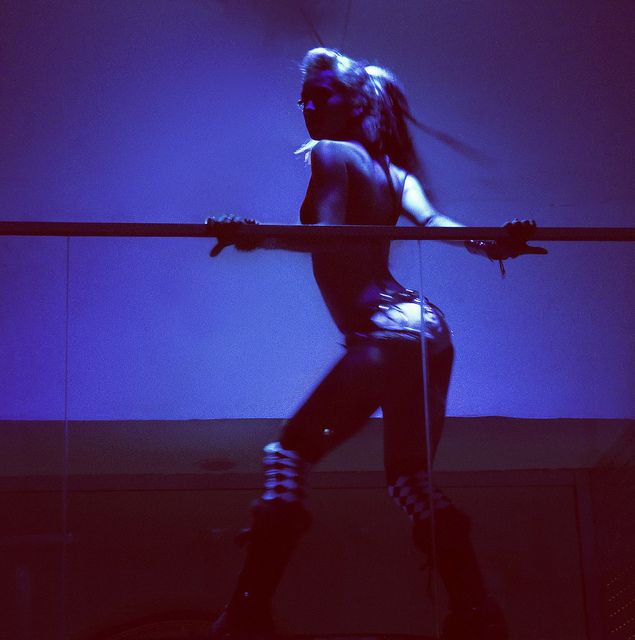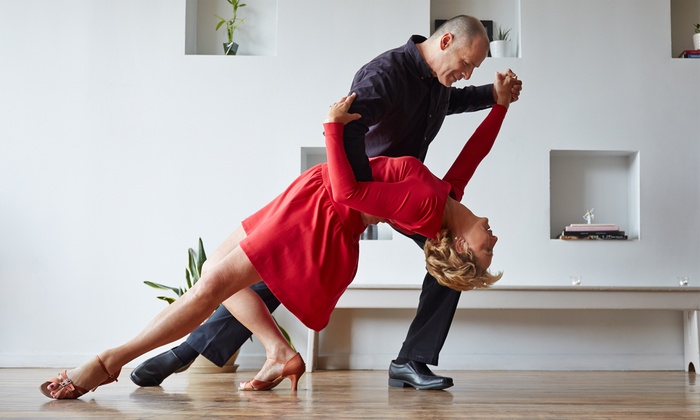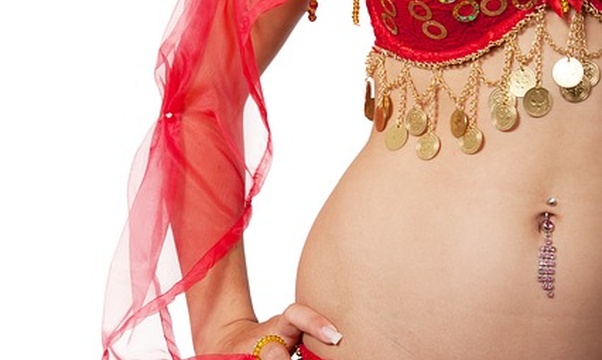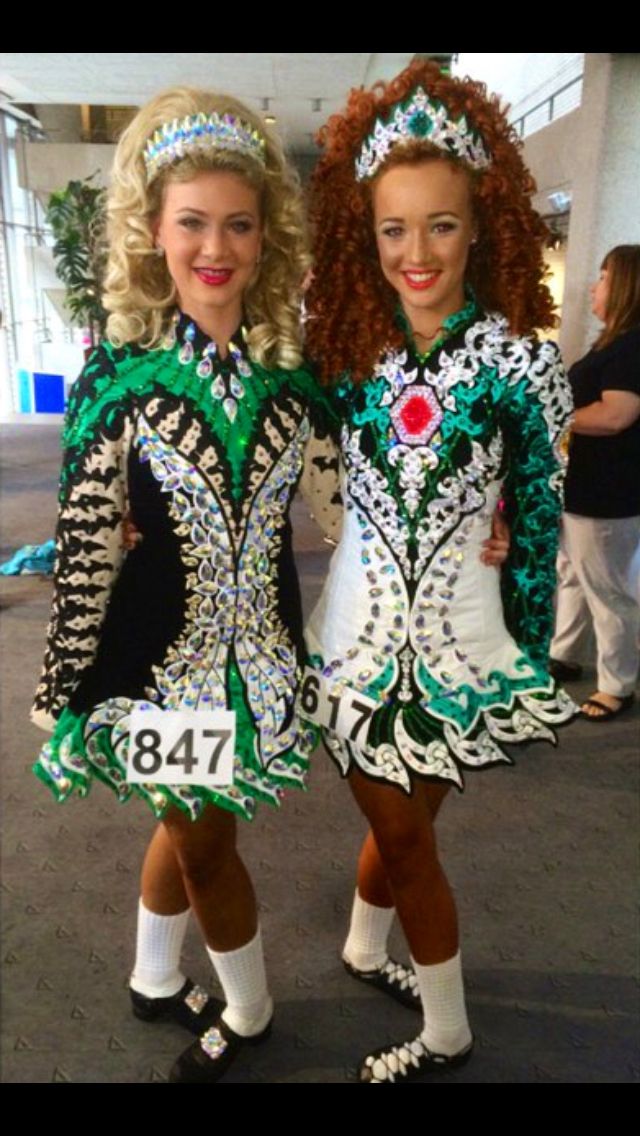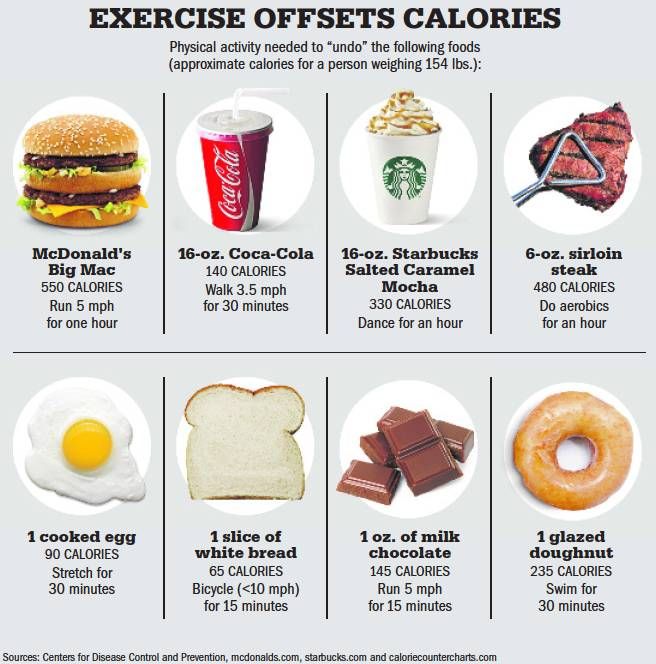How to gogo dance
8 things to know when considering becoming a go-go dancer
Go-go dancing might seem like an easy job. You just get in front of people at a club or party and dance, right? Wrong. There is so much more to it than just moving around. As a former go-go dancer I learned the hard way that it takes more than just looks and moves to succeed. But after figuring it out. I made good money and enjoyed the experience. Here’s what you need to know before becoming a go-go dancer.
1.Train for the Job
Dancers can dance up to 4 hours at a time. Cardio workouts help build endurance. Photo credit: Jeraldine Ramos
Practice dancing and do lots of cardio. Endurance is needed because go-go dancing involves dancing with high energy for long periods of time. If you’re not used to this type of physical workout you’ll tire out easily. You also might also have difficulty breathing and wake-up sore the next day.
2. Take dance classes
Youtube videos are very helpful when learning how to dance or new dance moves. Photo credit: Jeraldine Ramos
In go-go dancing you don’t get to choose what music you are dancing to. The DJs play whatever music they want depending on how the crowed reacts to the mix. The music may change tempo and even style. A go-go dancer must be able to improvise moves depending on the music that is being played. Dance classes or even watching Youtube videos can help you learn different ways to move your body and how to dance to different tempos without looking silly.
3. Connect with go-go groups
Diable Chaton (El Paso/ Las Cruces go-go group) and I, go-go danced when Kaskade a well known music producer and DJ came to The Plum City Lounge in El Paso, Tx. Photo by Mario Arizpe
Go-go groups help dancers find gigs. Check out the go-go groups in your local area, through Facebook, Twitter, and Instagram. What they post online can give you a glimpse on what type of venues they perform in, if they get a lot of gigs and if they perform for well-known DJs. Pictures can also show you what types of work they do so you can know what to expect. You don’t have to connect with a group. You can work as an independent go-go dancer and track down jobs on your own.
Pictures can also show you what types of work they do so you can know what to expect. You don’t have to connect with a group. You can work as an independent go-go dancer and track down jobs on your own.
4. Think like a businessperson
Knowing how to negotiate can get you high paying gigs. I was once paid $100 for thirty minutes of dancing through negotiating. Photo credit: Jeraldine Ramos
When considering a job you need to know how to negotiate your pay according to how much you will be working and how much you will need to be investing in costumes, hair and make-up. Get everything in writing. Having a written contract helps make sure you get paid for services provided. Go-go dancers can earn between $10 to $100 an hour depending on what they negotiate. I have been able to get high paying gigs through negotiating.
5. Promote yourself and the venue
Promoting can not only get people to go to the venue but also get you more jobs while establishing yourself as a go-go dancer. Photo credit: Jeraldine Ramos
Photo credit: Jeraldine Ramos
You can promote yourself and the venue using social media sites like Facebook and Twitter. Letting people know what days you are available for bookings and when and where you will be dancing is one way of promoting yourself. Promoting yourself and the venue can help you establish your name in the industry and possibly get you more jobs because it shows you can help bring in a crowd.
6. Be Creative
Venues like creativity. I have created many looks from adding gems to my face to doing my make-up like a doll. Photo by Mario Arizpe
With go-go dancing you must be creative. Go-go dancers are often asked to create themes and dress accordingly for an event the venue is promoting. You can get creative through costumes, make-up, and hair styles. Use the Internet to look up pictures for inspiration or watch a video tutorial on how to do your make-up or costume.
7. Be aware of your surroundings
It is important to be aware of your surroundings when people are drinking.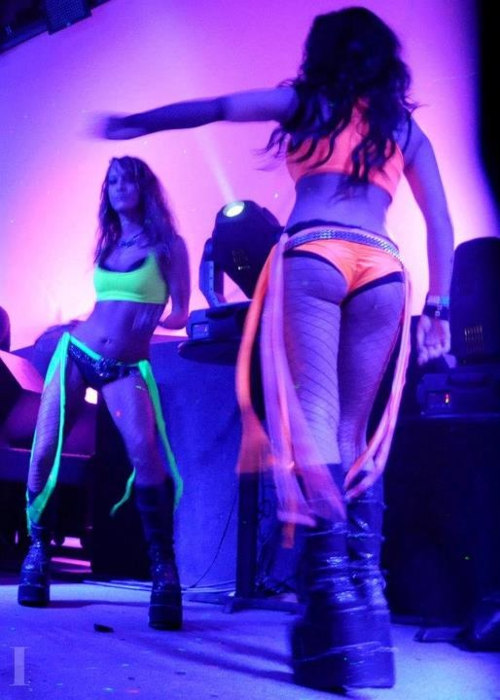 People can become violent and if you are drinking it can be easy for one to slip in a drug into your drink. Photo credit: Jeraldine Ramos
People can become violent and if you are drinking it can be easy for one to slip in a drug into your drink. Photo credit: Jeraldine Ramos
In most venues alcohol will be sold. This means that there might be some drunks that will be disrespectful. And, if you are drinking along with the patrons it can be very easy for someone to drug you. Make sure you know where the nearest bouncers are in order to signal them when someone gets out of hand or if you feel uncomfortable. Be sure to never let your beverage or water bottle out of your sight. Don’t take a drink from anyone you don’t know. Instead insist on being served only by the bartender or event organizers.
8. Have fun and smile
Smiling and having a good-time sets the mood of venue which can make it look like people are enjoying themselves. Photo by Mario Arizpe
Go-go dancers put the energy in the party. Not smiling puts out the vibe that you are not having fun and can make people leave. People come out to enjoy themselves so be sure to keep their spirits up. Besides, why not have fun when you are dancing!
Besides, why not have fun when you are dancing!
Go-Go Dancer - Salary, How to Become, Job Description & Best Schools
How to Become a
The complete career guide to be a Go-Go Dancer: salary, job growth, employers, best schools, and education you may need to get started.
Why We Love It
Go-go dancers work for bars, casinos, nightclubs, and other venues where dancing is a major component of the entertainment provided. They dress up in costumes, wear provocative clothing, and dance to many different types of music to entertain crowds and get people in the mood to join in on the dancing.
What is a Go-Go Dancer?
The following job responsibilities are common for individuals in go-go dancer roles:
- Perform a variety of dances to entertain crowds and encourage dancing at nightclubs, bars, concerts, and other venues where music is a major component of entertainment
- Dance for long periods of time while working
- Design creative costumes—outfits, makeup, and accessories—for performances
- Audition for go-go dancing opportunities
- Promote performances to draw crowds and grow followings
A Day in the Life
Go-go dancing is often confused with exotic dancing, though the two roles are very different. First, go-go dancers generally do not take their clothes off when dancing. They don’t do lap dances or work for tips. The main role of a go-go dancer is to entertain crowds and get people in the mood to get out on the dance floor and join in on the fun. They are promoters and entertainers that perform at nightclubs, bars, casinos, concerts, and raves. They do not work in strip clubs.
First, go-go dancers generally do not take their clothes off when dancing. They don’t do lap dances or work for tips. The main role of a go-go dancer is to entertain crowds and get people in the mood to get out on the dance floor and join in on the fun. They are promoters and entertainers that perform at nightclubs, bars, casinos, concerts, and raves. They do not work in strip clubs.
Most go-go dancers are professionally-trained, career dancers. Before performances, they put together their costumes, do their makeup, and choose their accessories. In some venues, they may have designated uniforms, but in others, their goal is to find creative, provocative, and eye-catching costumes that will draw the attention of the crowd and get people in the mood to dance and have a good time.
Go-go dancing can be hard work. Dancers usually perform for 30 minutes to an hour at a time, take a short break, and then start dancing again. While they may have an idea of the type of music the DJ is going to play, the specific songs and beats are usually a surprise, so most of them are trained in a variety of dance styles so they can continue dancing appropriately regardless of what song starts playing.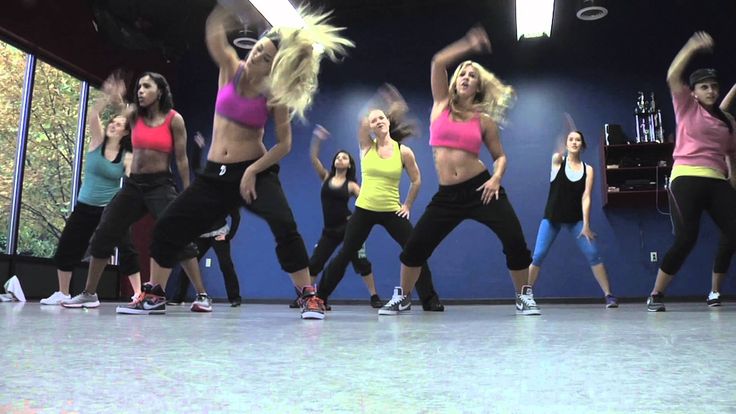 They also promote themselves and their careers by advertising their events and trying to grow followers. This helps prove their ability to draw a crowd when auditioning for new positions.
They also promote themselves and their careers by advertising their events and trying to grow followers. This helps prove their ability to draw a crowd when auditioning for new positions.
Typical Work Schedule
Most go-go dancers work evening and weekend shifts; they need to be available at hours when people are out in the world drinking and having a good time. Generally, they only work part-time.
Typical Employers
Some go-go dancers are hired by DJs to perform in a series of shows to help get the crowd in the mood to dance. Others work for nightclubs or casinos and are employees of the companies they work for. Some are hired by entertainment providers and work in multiple venues as needed. Finally, some find their own work and spend time auditioning for different groups, venues, and opportunities.
How To Become a Go-Go Dancer
Higher education is not required to become a go-go dancer, though many go-go dancers do have formal dance training.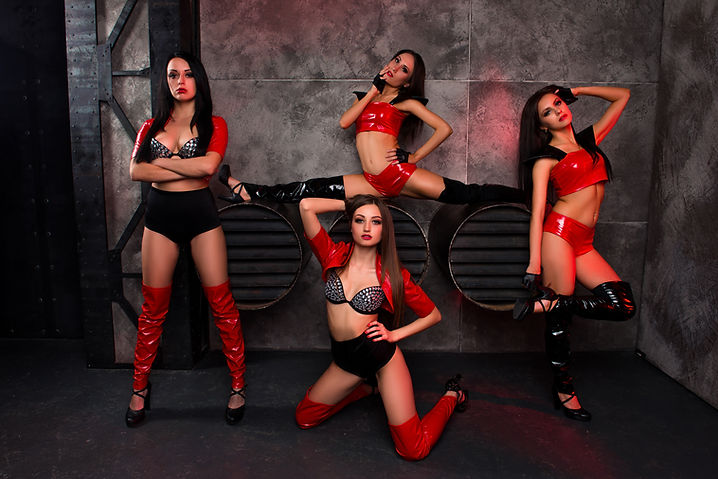 For most roles, only a high school diploma is required. Some go-go dancers learn to dance by taking dance lessons as children and adolescents, and they apply the skills they learned while studying dance in their youth to work as go-go dancers as adults. Others may have just studied dance on their own, or may have natural dancing talent with no formal education.
For most roles, only a high school diploma is required. Some go-go dancers learn to dance by taking dance lessons as children and adolescents, and they apply the skills they learned while studying dance in their youth to work as go-go dancers as adults. Others may have just studied dance on their own, or may have natural dancing talent with no formal education.
Many go-go dancers find work simply by asking other go-go dancers if they can audition. Entertainment groups, DJs, nightclubs, and casinos are frequently looking for additional dancers. Speaking with another go-go dancer may land aspiring go-go dancers an audition, and if they’re willing to get up on stage and look good dancing, they can land recurring positions at the venues they auditioned for. Other go-go dancers take a more formal approach and apply for open positions that were formally advertised.
Unfortunately, a career in go-go dancing has a time limit. For most, the work is too hard to continue after a certain age. Because of this, many go-go dancers work towards a bachelor’s degree in theater, arts, or dance. With a bachelor’s degree, they can qualify to work as dance instructors later in life when go-go dancing gets to be too hard on their bodies. Because these dancers get professional training while studying for a degree, they can qualify to teach a variety of dance styles.
Because of this, many go-go dancers work towards a bachelor’s degree in theater, arts, or dance. With a bachelor’s degree, they can qualify to work as dance instructors later in life when go-go dancing gets to be too hard on their bodies. Because these dancers get professional training while studying for a degree, they can qualify to teach a variety of dance styles.
Go-Go Dancer Salary Data
We’ve provided you the following to learn more about this career. The salary and growth data on this page comes from recently published Bureau of Labor Statistics data while the recommendations and editorial content are based on our research.
National Anual Salary
Low Range
---Average
---High Range
---National Hourly Wage
Low Range
$9/hrAverage
$18/hrHigh Range
$33/hrHow do Go-Go Dancer salaries stack up to other jobs across the country? Based on the latest jobs data nationwide, Go-Go Dancer's can make an average annual salary of ---, or $18 per hour. This makes it an Above Average Salary. On the lower end, they can make --- or $9 per hour, perhaps when just starting out or based on the state you live in.
This makes it an Above Average Salary. On the lower end, they can make --- or $9 per hour, perhaps when just starting out or based on the state you live in.
Salary Rankings And Facts
Highest Education Among Go-Go Dancers
- 0.5% Doctorate
- 4.3% Masters
- 17% Bachelors
- 10.6% Associates
- 29% College
- 26.7% High School
- 11.9% Less than High School
Job Growth Projections and Forecast
2014 Total Jobs
13,0002024 Est. Jobs
13,600Job Growth Rate
4. 6%
6% Est. New Jobs
600How does Go-Go Dancer job growth stack up to other jobs across the country? By 2024, there will be a change of 600 jobs for a total of 13,600 people employed in the career nationwide. This is a 4.6% change in growth over the next ten years, giving the career a growth rate nationwide of Below Average.
Growth Rankings And Facts
What Companies Employ The Most Go-Go Dancers
| Industry | Current Jobs | New Jobs Needed | % Increase |
|---|---|---|---|
| Self-employed workers | 2,000 | 100 | 0% |
| Drinking places (alcoholic beverages) | 1,700 | --- | --- |
| Other schools and instruction; private | 900 | 200 | 0% |
Want To Be a Go-Go Dancer? Get Started!
Generate your free SmartPlan™ to identify colleges you like, and potential ways to save on a degree or certification program toward your career with courses, offers, and much more!
Enroll Now and Get Started
or Learn More →
I want to dance.
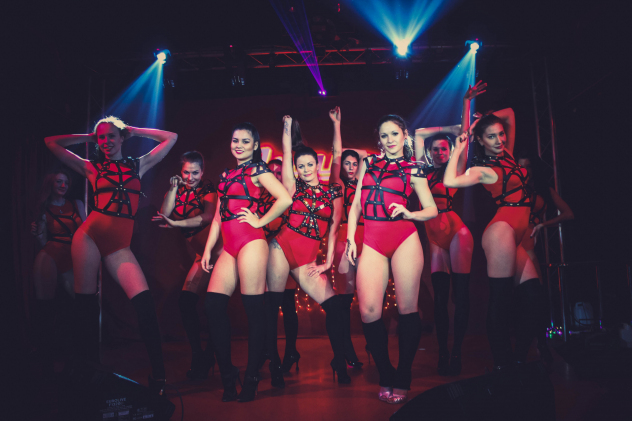 10 misconceptions about dancing
10 misconceptions about dancing The desire to learn how to dance is natural and natural in the modern world. You can list the reasons, starting with obvious and popular pragmatic desires, for example, to start moving or losing weight, ending with unconscious and even existential ones.
This is due to the fact that dances are at the subtle intersection of the inner and outer worlds, physical and spiritual. Above this, music becomes a driver that cannot leave anyone indifferent.
In dancing, there is magic inside a person, which is not always noticeable when viewed from the side. At the initial stage, it is the external picture that attracts to dances, and sometimes repels, as it seems too frivolous and superficial.
But there are even stronger obstacles that stop many people from starting dancing. These illusions and delusions roam the minds of the majority, and are often afraid to ask about them directly, or they ask the question about it so often that they are no longer ready to hear an honest direct answer.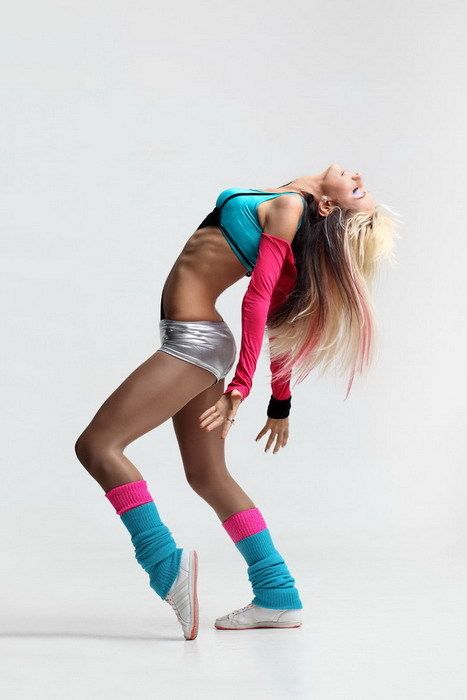 I will try to do it in this article.
I will try to do it in this article.
There are many examples of contemporary dance instructors sharing their thoughts about not expecting to be in the dance industry. Once upon a time there was a man and was engaged in adult, serious business. Sometimes even very serious. A person could have children and even grandchildren. I saw dances only on stage or on TV. For reasons unknown to himself, he ended up in dances. At first, everything seemed like entertainment and a useful pastime. But time has passed, and a person catches himself thinking that he thinks about dancing not just every day, but really all the time. A couple of years pass, and he already becomes a teacher or organizer of some event.
A similar path can start at 15 or 55 years old. The only difference will be in the self-perception of the starting stage, that it’s too late to dance. In fact, for each age there is its own dance direction, which can reveal it to the greatest extent at this stage. Hip-hop or breaking is closer to children and teenagers, and Argentine tango is closer to adults. It's never too late to start dancing. You need to make the right choice of dance style based on several parameters: age, gender, music, goal. There is a dance direction for any arrangement.
Hip-hop or breaking is closer to children and teenagers, and Argentine tango is closer to adults. It's never too late to start dancing. You need to make the right choice of dance style based on several parameters: age, gender, music, goal. There is a dance direction for any arrangement.
Misconception 2: Men don't dance
Our culture has a number of restrictions related to dancing. Most of these causes are psychological and lie outside the realm of rational reasoning.
First, in our culture, in principle, dancing for pleasure or self-expression appeared relatively recently. 20-30 years ago dance clubs were only for children. To start dancing even in adolescence was considered exotic.
Secondly, the aesthetics of the body in our country for men is not in the focus of attention. In general, this can be attributed to the fact that Russian men try hard not to draw attention to their appearance and clothing. Men in our country use other tools for this.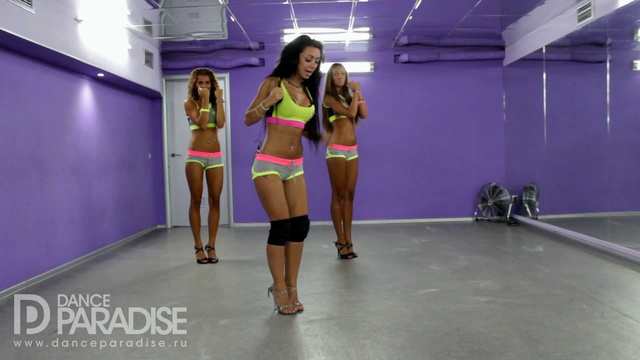
Third, dancing is associated with entertainment and alcohol. If a man feels serious and respectable, then he either does not have time or desire for this.
Nowadays the general cultural background has changed and the result is that men are learning to dance. It becomes as much a sign of masculinity as clothing, hair or beard.
Unfortunately, many misconceptions remain even among those who have already started dancing. Dance teachers do not always pay attention to this, as it seems to them that this is a matter of course.
Fallacy 3: special training is needed
For an outside observer, there is always a cognitive dissonance about what dance is. What he sees on the big stage in the form of a show with sweeping movements and splits is obviously dancing. Breakers doing unimaginable elements in the air and on their hands, competing with each other, also seem to be dancing. Pensioners in the park waltz. Dancing again, but for some reason everyone is so different. How to understand that this is a dance, and what physical criteria should be in the body.
How to understand that this is a dance, and what physical criteria should be in the body.
In fact, any self-expression through the body to music can be attributed to dance. There are a number of reservations, but they are not essential. For self-expression, a person uses the set of plastics that he has. Subtlety and technique do not depend on extreme ways of self-expression, and it often happens that splits and somersaults interfere with a meaningful dance. The development of plasticity and the expansion of the body's capabilities are part of the preparation of the dancer, but not an end in itself.
Fallacy 4: You must learn to dance in pairs
In couple dancing, the final learning outcome is that the couple dances at a party. It would seem that you should always train together to get the desired result. This is not true. Let's take an example from boxing. An indicator of a boxer's skill is a fight with an opponent, but this does not mean that he constantly has to fight. Also, the ability to dance is built on the possession of one's own body and the ability to interact.
Also, the ability to dance is built on the possession of one's own body and the ability to interact.
The skill of the teacher is the correct selection of methods so that the student masters the skill. Based on the skill, you can engage in creativity and self-expression in dance. Not everyone knows, but it is no coincidence that almost all social dance dancers have a serious dance background, which is based on the development of individual techniques.
The same can be attributed to the interaction in a pair. The ability to separate in oneself the one who leads and the one who follows the lead is impossible within the framework of studying the sequence of movements in pairs. For this, there are special exercises that make the skill more versatile. For this, the presence of a permanent couple is not necessary, as well as the regular presence of a partner in general.
IMPORTANT! You can’t experiment at a party, and everything should be in its place there: men dance with women.
Getting rid of illusions is a complex internal process. If you leave them to yourself, you can even get the opposite result.
Fallacy 5: plastique and stretching are mandatory attributes of dance
Much depends on the genre of dance that you want to master. In previous articles, I have already mentioned that different dance styles are suitable for different ages. It is appropriate to dance hip-hop in adolescence or youth, Argentine tango is a more adult dance, it is important to enter classical choreography at a young age.
The degree of necessary plasticity and sensitivity to the dance direction also correlates. For example, breaking requires great physical effort and dexterity. Elements are built on acrobatics and high speed of execution. Who are they more suitable for? Obviously young people.
There is a lot of interaction in salsa. It is necessary to feel the partner subtly, to be able to show a variety of figures and elements. Twine or acrobatics are completely inappropriate here. However, a variety of ways to show oneself are required. Accordingly, the dance is youthful, but not at all childish.
Twine or acrobatics are completely inappropriate here. However, a variety of ways to show oneself are required. Accordingly, the dance is youthful, but not at all childish.
The older the dance, the less stretching or acrobatics is required. The main emphasis is on the quality of technology, the variety of ideas and the ability to show plasticity.
Misconception 6: Mirrors are necessary for learning
There is a set of instruments that dancers use to learn how to dance. The fact is that the dancer needs to receive feedback on how his movements look from the side. It is impossible to dance and see yourself from the side at the same time. The most common tool is a mirror. But not the only one.
Like any auxiliary tool, mirrors have positive and negative effects. The positive is that they can receive feedback in real time and technically it is not very difficult. The downside can be dependence on mirrors. A situation where a dancer cannot capture the feeling of dancing, such as on stage or at a party. For these purposes, you can use, among other things, video filming or proper preparation.
For these purposes, you can use, among other things, video filming or proper preparation.
In many countries in Latin America, dance classrooms are not equipped with mirrors. Classes are held in bars or large halls. The dancers initially form the skill of focusing on the inner sensation, and not the habit of looking for their reflection in the mirror with their eyes.
Misconception 7: there is a lot of obsceneness in dancing
A common question from novice dancers who are taking their first steps in more contact couple dances is “in order to dance cool, there must be passion inside the couple?”. I immediately answer that no, not necessarily. Kizomba, bachata and Argentine tango attract many with their close contact. Like any other contact in our everyday life, in dances, contact can be different. We hug friends, parents, children. These hugs can wear many different shades. Sexual overtones are one of many.
The culture of dance also includes the boundaries of what is acceptable.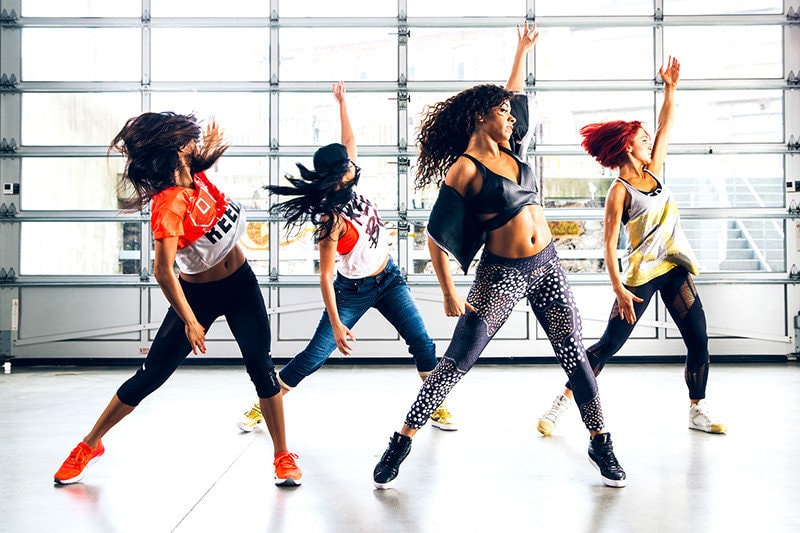 A compliment from a well-mannered person is different from a statement about female sexuality by a gopnik. Usually, those who study at a dance school already have an idea of what boundaries should not be crossed. A good dance from a technical point of view will never look vulgar or vulgar.
A compliment from a well-mannered person is different from a statement about female sexuality by a gopnik. Usually, those who study at a dance school already have an idea of what boundaries should not be crossed. A good dance from a technical point of view will never look vulgar or vulgar.
Dancers always have a choice about the boundaries of contact. Most prefer to leave a good impression of themselves, as word spreads just as fast in the dance world.
Misconception 8: the best dancers are the bearers of culture
Even the very question of the origin of this or that dance can be paradoxical and ambiguous, especially when it comes to its development and performance.
For example, the Viennese waltz did not originate in Vienna, but in Germany. Salsa has its main roots in the USA, not in Cuba. The famous Greek folk dance sirtaki was invented for the film Zorba the Greek and appeared only in 1964.
The same can be attributed to the development of modern dance styles. Korea is known for its world-leading break dancers. People go to Turkey for Argentine tango, Spain is strong with excellent salsa and bachata dancers, in Egypt, Russians are considered the best belly-dance performers.
Korea is known for its world-leading break dancers. People go to Turkey for Argentine tango, Spain is strong with excellent salsa and bachata dancers, in Egypt, Russians are considered the best belly-dance performers.
A good dance is based on quality training and diligence. Skin color, place of birth and age are secondary. Exotic appearance, unfortunately, is often a reason to be more superficial about one's own professional development. This becomes the reason for the low level of teaching among the bearers of culture. I am sure that few readers of this post will be ready to conduct a master class in Russian folk dance outside of Russia.
The mastery of mastering and teaching a particular style does not depend on the dancer's homeland. And "they absorbed the dance with their mother's milk" is nothing more than a common misconception.
Misconception 9: You have to know a lot of moves to learn how to dance
Focusing on learning a lot of moves often detracts from the essence of dance. Of course, the sequence of figures is important. Especially at the start. Over time, the dancer should have an understanding of how movements can be generated independently. Accordingly, instead of memorizing millions of figures, you can understand how to create them.
Of course, the sequence of figures is important. Especially at the start. Over time, the dancer should have an understanding of how movements can be generated independently. Accordingly, instead of memorizing millions of figures, you can understand how to create them.
From every system of improvisation that a dancer can use as an instrument, dozens, hundreds or thousands of variations are derived. This frees the head from trying to reproduce the exact sequence and definitely adds freedom in the performance of the dance.
The huge theme of musicality can be attributed to the same question. Not every pre-conceived or learned sequence will fit specific music. The dance should give freedom, and not drive the dancer into the shell of the ropes.
Misconception 10: dancing is homosexual
The unusually high attention to the body and flair from stories about professional ballet led to the spread of this myth, among other things. Unfortunately, such an idea still exists in the minds of our fellow citizens.
The dance industry is now very broad and is represented by many dance styles. Some of them can even be called homophobic. Dances reflect the general attitude to the world and it is different depending on the life position and worldview of a person.
In many dances there is contact between the dancers. In Russia, dance contact between men has always been perceived very intensely. In most other countries it is different. An example of the fact that this tension is associated only with the dance theme and does not apply to other areas is, for example, wrestling. When practicing techniques, men are in much closer contact with each other. Sometimes lying on the floor and holding each other tightly. The historical roots of Greco-Roman wrestling are also ambiguous from a sexual point of view. But in our country, unlike dance, they are perceived as acceptable and brutal.
Dance, like the culture of speech, makes a modern person more successful and self-confident. The ability to control one's body, tune in to another person and the ability to be aesthetic in the plasticity of movement is valuable in the modern world. If we add here the pleasure of the process and the availability of dance as such, then the possibilities of this activity can hardly be overestimated.
The ability to control one's body, tune in to another person and the ability to be aesthetic in the plasticity of movement is valuable in the modern world. If we add here the pleasure of the process and the availability of dance as such, then the possibilities of this activity can hardly be overestimated.
It's sad when interested people are stopped by prejudices and myths that have nothing to do with dancing. Freedom in body movements begins with freedom of thought and willingness to change.
I hope that this review will help to take a different look at the dance culture for those who still have doubts about whether to start dancing.
Share on social networks:
Modern dance to modern music
How dancing can become an addiction
The fear and magic of tango
Dangerous sexuality
How dancing on video differs from dancing in movies
The self-destruction of the pair dance community
The Salsa series as a mirror of the community
Destroying the myths about leading pair dance
Does dancing make us better?
12 life hacks to quickly learn how to dance
The seven deadly sins of teachers
Why we will never dance bachata like the Dominicans
Why tango?
Debate over musicality
Selection of dances according to alcohol preferences
Where to find inspiration for dancing?
Terrible tango nuevo
Distribution of roles in a salsa party
Argentinean tango through the eyes of a salsa dancer
Is there a predisposition to dancing?
Which is more effective: individual or group lessons?
Sexual connotations in partner dancing
7 tips for those who want to learn how to dance
September 9, 2020 Reno5 Life
Dancing is a great way to make friends with your body and gain self-confidence. And yes, they can be mastered at any age.
And yes, they can be mastered at any age.
1. Choose your style
The idea here is the same as for sports: if you secretly hate yoga or iron exercises, you are unlikely to go to workouts week after week. To achieve noticeable progress in dancing, a beginner will have to practice a lot and regularly, so it’s better not to torture yourself and choose a direction that really ignites.
You can focus on the music that you like - you need to catch the drive from movements to it. It is music that forms the style of dance and its energy, so decide what is closer to you: for example, funk lovers should try popping or locking, folk fans may like Irish dancing, and if you respect jazz, swing and everything like that, take a closer look at lindy hop.
Another criterion is the nature of the movements. Some are closer to dynamic, as in hip-hop, others are smooth and sensual - for this in tango. There are also health restrictions to consider. So, twerk is not suitable if there are problems with the lumbar spine, with sore knees it is better not to get involved in shuffle, and it will be difficult for an aged person to master house.
2. Set a goal
Photo: Iakov Filimonov / ShutterstockYou can start dancing at any age, but it's important to keep in mind why you started it in the first place. It is perhaps too bold to expect that in half a year of classes it will be possible to reach the level of international dance championships from scratch. But if you want to try dancing in order to develop plasticity and learn to feel the body better, great, go ahead.
Don't expect everything to work the first time. When you learn from scratch, difficulties are absolutely normal, the main thing is not to score in classes. Over time, both the correct posture and a beautiful gait will be developed, and as a bonus you will also get self-confidence - with freedom of movement, freedom from complexes will come.
3. Don't forget about sports
Some dances in themselves make for a good workout. A vigorous shuffle will replace cardio, and a break can give a load to almost all muscle groups. And yet, without preparation, it will not be easy.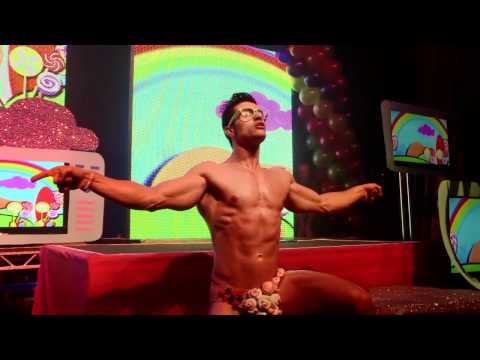 A more or less good stretch is needed in any type of dance, and, for example, strong arms and strong abdominal and back muscles are also useful for pole dancing. You can combine dancing with strength exercises, but you need to give the body time to recover and not plan classes in a row, but allocate at least a day of rest between them.
A more or less good stretch is needed in any type of dance, and, for example, strong arms and strong abdominal and back muscles are also useful for pole dancing. You can combine dancing with strength exercises, but you need to give the body time to recover and not plan classes in a row, but allocate at least a day of rest between them.
And don't forget to warm up before dancing. So that the training does not end with an injury, the muscles and joints need to be prepared for the load. You can allocate 10–15 minutes for a warm-up, it should include simple articular gymnastics (at least elementary rotational movements of the shoulders and knees), tilts and dynamic stretching.
4. Take some lessons from a trainer
Especially if you have never danced before. Those with experience can learn new styles at home with video tutorials, but that's because they already know how to control their bodies. Beginners are unlikely to succeed, but disappointment in themselves and demotivation are guaranteed - if you can’t repeat elementary movements, then there’s no point in doing it.
Nothing really strange here. Without preparation, it is difficult to just take it and start moving freely. At least the basic elements are better to master under the guidance of a pro, and when you feel that you are coping, supplement these lessons with home workouts.
5. Learn something new in every class
When you repeat the same set of exercises and movements over and over again, classes turn into a good way to pass your free time, only you can forget about progress. Acquaintance with new elements is the same mandatory part of any workout as a warm-up. It doesn't matter if you work with a mentor or on your own.
Do not immediately try to copy cool dancers. First, study the basic movements, then try to combine them into bundles until you hone them to automatism, and then experiment and improvise, creating something new based on familiar elements.
6. Record yourself on video
You don't need to record the whole workout from the warm-up on, it's enough to record only those moments with which you have problems. These can be separate movements or bundles that are not given in any way. Review the video and, if possible, objectively assess what is wrong: perhaps there are technical problems that are difficult to notice in the process. When you understand what's wrong, try to repeat the movement and record it on video again - and so on until you achieve a good result.
These can be separate movements or bundles that are not given in any way. Review the video and, if possible, objectively assess what is wrong: perhaps there are technical problems that are difficult to notice in the process. When you understand what's wrong, try to repeat the movement and record it on video again - and so on until you achieve a good result.
This approach will help you find errors and track progress. You can not even limit yourself to memorized ligaments, but improvise - then see how it looks from the outside.
7. Find like-minded people
Photo: Iakov Filimonov / ShutterstockIf you need an extra reason not to miss classes, then meeting new people can be a good motivation. It is easier here for those who train in a group. Often the dance school becomes the center of a close-knit community, where people come not only for the sake of classes, but also just to spend time together at dance parties.
Finally, the more partners around, the more experience.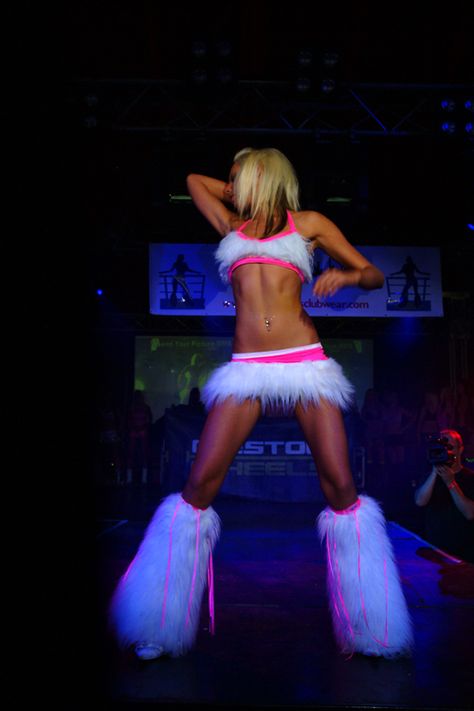 Do not limit yourself to dancers of your level of training and practice with those who are stronger or weaker than you. In the first case, you will be able to improve your skills, and in the second, you will try yourself as a coach - this, by the way, is a good way to learn to take more initiative and understand the very principle of movement in dance, and not just memorize the alternation of chords.
Do not limit yourself to dancers of your level of training and practice with those who are stronger or weaker than you. In the first case, you will be able to improve your skills, and in the second, you will try yourself as a coach - this, by the way, is a good way to learn to take more initiative and understand the very principle of movement in dance, and not just memorize the alternation of chords.
Stay fit and connected with the OPPO Watch. They have two powerful processors, a bright AMOLED display, 1 GB of RAM and 8 GB of internal memory, Bluetooth, Wi-Fi and NFC modules. And more than 90 training modes, including those designed specifically for ORRO. Work out cooler with music, you can listen to it in streaming services or download tracks to the memory of your watch.
If you want to enjoy clear sound, the OPPO ENCO W31 Wireless Headphones are for you. Two-level noise reduction system, easy operation and stable connection will make listening to music and talking on the phone as comfortable as possible.